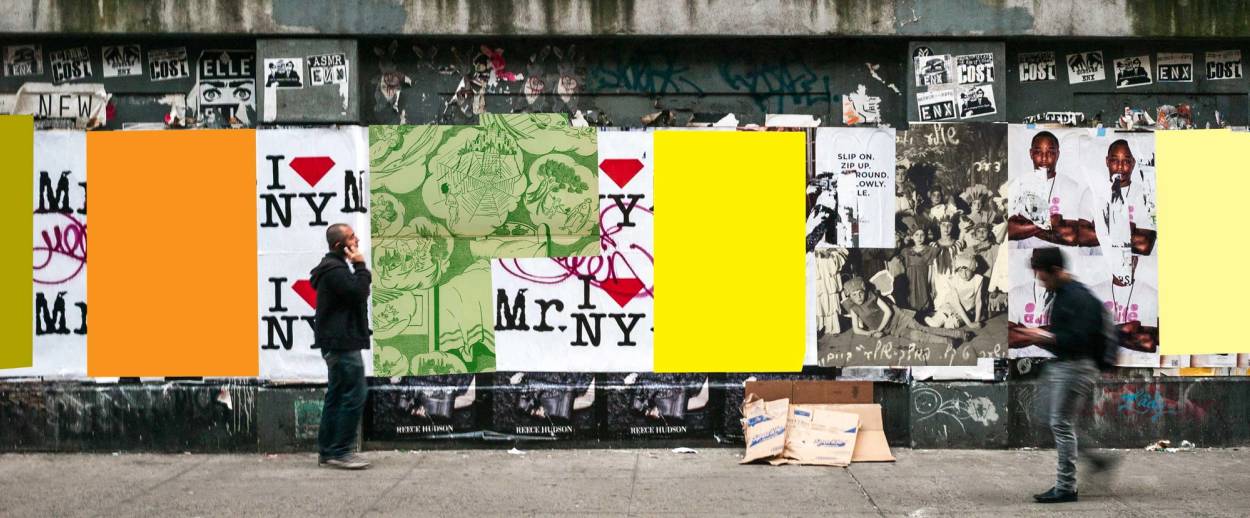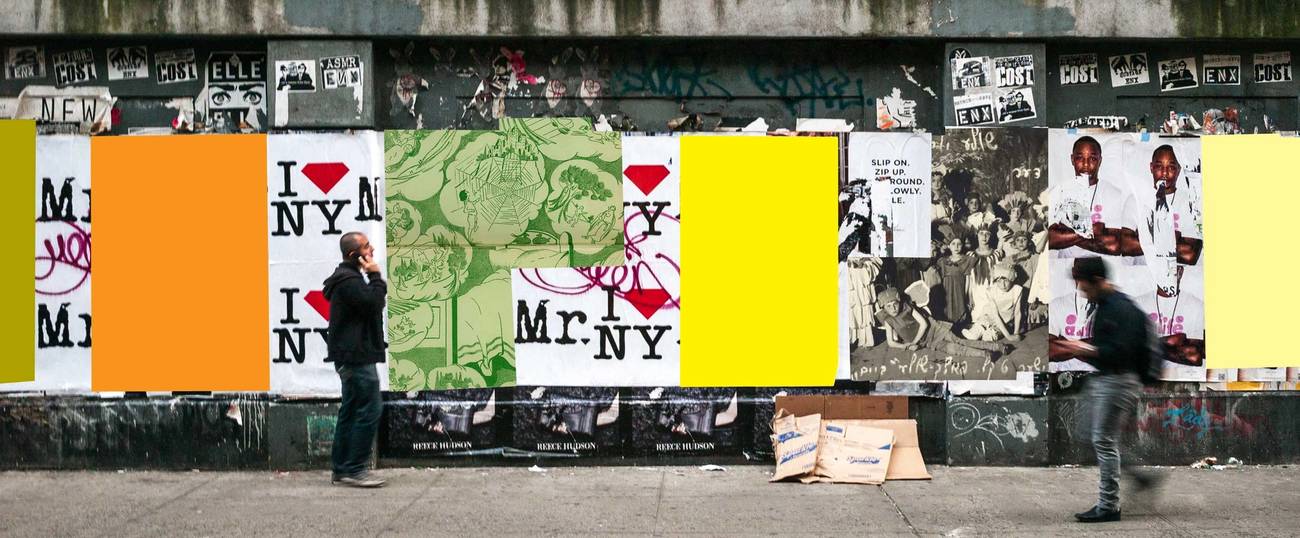Remembering Homework
Rokhl’s Golden City: Bringing Yiddish children to life, while 1970s New York drops dead




OPH (Other People’s Homework): Is there anything better? Or am I the only weirdo who could spend hours looking at historical homework? My own career as a student was, shall we say, undistinguished, hampered as it was by my disdain for doing what people told me to. But as an adult, I find something incredibly compelling about historical homework and other types of school work. Lucky for me (and you), there’s a compact but fascinating new exhibit at YIVO titled Yidishe Kinder: Jewish Children and Their World Before the Holocaust.
Adults naturally think about posterity, leaving behind memoirs, art, poems—objects meant to endure, to self-consciously speak for the creator long after she is gone. Kids usually don’t. Why would they? And how? The work of children is the most ephemeral of all ephemera. But from its founding in 1925, YIVO had as its mission to collect everything having to do with Jewish life in Eastern Europe, and that included children’s schoolwork and learning materials. It’s through that historical turn that we have the treasures now on display at YIVO.
As the placard at the Yidishe Kinder exhibit points out, Jewish education changed tremendously in the early 20th century, especially after the First World War. Traditional methods of schooling focused mainly on boys, and for them, mainly on skills needed for exegesis of core Jewish texts. Homework didn’t really exist outside repetition and review of those texts, nor did time for “creative expression.”
After the war, new kinds of pedagogical experiments flowered for Jewish children, and opportunities for Jewish girls, especially, exploded. New schools were often tied into political and religious movements. Some of the most interesting artifacts in the exhibit come from the TSYSHO schools, a new experiment in secular Yiddish language schooling based in Vilne but spread throughout Poland.
One of my favorite drawings is the enigmatic boy-in-a-bottle captioned “Hershele in a kleyn fleshele” (Hershele in a small bottle). How did Hershele get in there? And why? We’ll never find out, but it’s fun to think about the mischievous student who put him there. My other favorite is from a TSYSHO student named Sore Ziveltshinski, titled A Cleaning Holiday. Perhaps because it was a secular TSYSHO school, or because she was a first- or second-grader, but Ziveltshinski captions it phonetically in Yiddish, “a reynkayt yontev” instead of “yom tov.” The stiffly drawn students in yellow, blue, and red are helping the teachers clean the classroom in a sweetly mundane scene any contemporary first-grader could relate to, far from the (often) dreary black-and-white photos of sad-eyed children inevitably seen through our post-khurbn eyes.
How to give voice to the voiceless? How to take victims beyond victimhood? For many years, French translator and historian Isabelle Rozenbaumas has been working on a multimedia project, Bat Kama At ?, addressed to a very specific group, the 500 young women and girls of Telz (Telsai) Lithuania murdered in 1941. Telz itself was known to be the elite of the elite of Litvish learning, site of the famed Telz yeshiva for young men. But Telz was also the site of a new kind of school, the Gymnasium Yavne school for girls. Through her website Bat Kama At, Rozenbaumas has found a way to gather the material artifacts of this new, educated female elite. She has collected report cards, syllabi, writings, photographs, and more, all testifying to an intellectual life (Latin, Greek, Hebrew, calculus and more) I find both intimidating and awe-inspiring.
I was at the Yidishe Kinder exhibit the other day, quietly formulating my (small) critiques of the exhibit, when I looked up to see Exhibitions Curator Eddy Portnoy standing right in front of me. I told him how much I loved the homework and classwork display. Why not do a whole exhibit on homework? Eddy gently suggested such an exhibit might have an audience of one. To satisfy my desire for snooping in strangers’ old notebooks, I’ve been reading up on a project out of the University of Washington’s Stroum Center for Jewish Studies. Dr. Hannah Pressman has been writing about her grandmother Estrella Galante’s life and education through the Alliance Israelite Universelle. It was through the Alliance that in 1914 Estrella sailed from her small Sephardic community on Rhodes to Paris, where she was trained to be a teacher, and, more important, brought into the “civilizing mission” of the Alliance by which Jews became French citizens.
Estrella didn’t leave anything resembling a memoir, but she did leave her notebook, full of notes, vocabulary lists, and pop-culture ephemera. Pressman and researcher Christina Sztajnkrycer have been studying Estrella’s notebook for clues to the life of an ordinary member of a new elite, painting a picture of the quiet vanguard of a new chapter in Jewish history.
***
See: Yidishe Kinder is much more than children’s drawings. The exhibit includes stunning photographs, textbooks, and a whole section on toys and amusements, exquisitely reconstructed by artist Mayer Kirshenblatt, based on memories of his childhood in Apt (Opatow), Poland. Kirshenblatt was also an acclaimed painter. His work was featured in a gorgeous 2009 Jewish Museum exhibit and book, They Called Me Mayer July.
Watch: In addition to Bat Kama At, creator Isabelle Rozenbaumas made an impressionistic film titled Nemt (Take) recording her journey to modern day Vilnius and her impressions on the difficulty of spiritual and cultural reclamation.
ALSO: There’s quite a bit of overlap between “klezmer” subculture and “accordion” subculture. Expect Eastern European sounds and more at the Accordion Rendezvous, Wednesday, June 21, 7 p.m. at Bryant Park (part of the citywide Make Music program). If you want to get as far away as possible from “gigantic mob of accordions” while still staying in the theoretical category of “folk-ish,” YIVO, in partnership with Temple Emanu-El, is presenting the music of composer Lazare Saminsky. Saminsky was, among other things, a member of the legendary Society for Jewish Folk Music in Saint Petersburg. Jewish Songs and Dances: Music from the Archive of Lazare Saminsky, Wednesday June 21 at 7 p.m., Temple Emanu-El, 5th Avenue at 65th Street, New York, $15. Finally, last week I scoffed at the idea of nostalgia for the dark days of New York in the ’70s. So, of course, this week I’m here to recommend a brilliant festival coming up July 5 to 27 at the Film Forum titled, what else, but Ford to City: Drop Dead. The lineup looks incredible and includes two of my favorites of the “New York gritty” genre, The Taking of Pelham One Two Three and The Warriors, this last in a good ol’ double feature with Escape From New York.
Rokhl Kafrissen is a New York-based cultural critic and playwright.